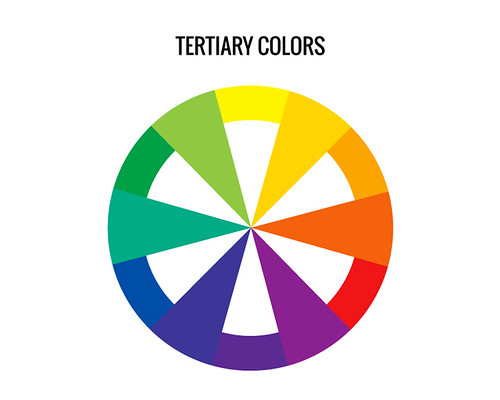| Home Page | Primary Color | Secondary Color | Tertiary Color | Color Wheel | Homework | Resources | Student Survey |
Imagine if we had only primary and secondary colors existing. Art will be very uninteresting. A tertiary color is a color made by mixing full saturation of one primary color with half saturation of another primary color and none of a third primary color, in a given color space. Another definition of tertiary color is provided by color theorists such as Moses Harris and Josef Albers, who suggest that tertiary colors are created by intermixing pairs of secondary colors: orange-green, green-purple, purple-orange; or by intermixing complementary colors. This approach to tertiary color relates specifically to color in the form of paints, pigments, and dyes.
Tertiary colors are amber, vermillion, magenta, violet, teal, and chartreuse.

There has been a long standing controversy, "is tertiary color and intermediate color the same or differnt" Please read the article below to gain more understanding on what intermediate colors are and what makes them differnt from tertiary colors. What are Intermediate colors
Please view the following video.
| Home Page | Primary Color | Secondary Color | Tertiary Color | Color Wheel | Homework | Resources | Student Survey |